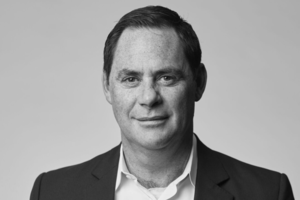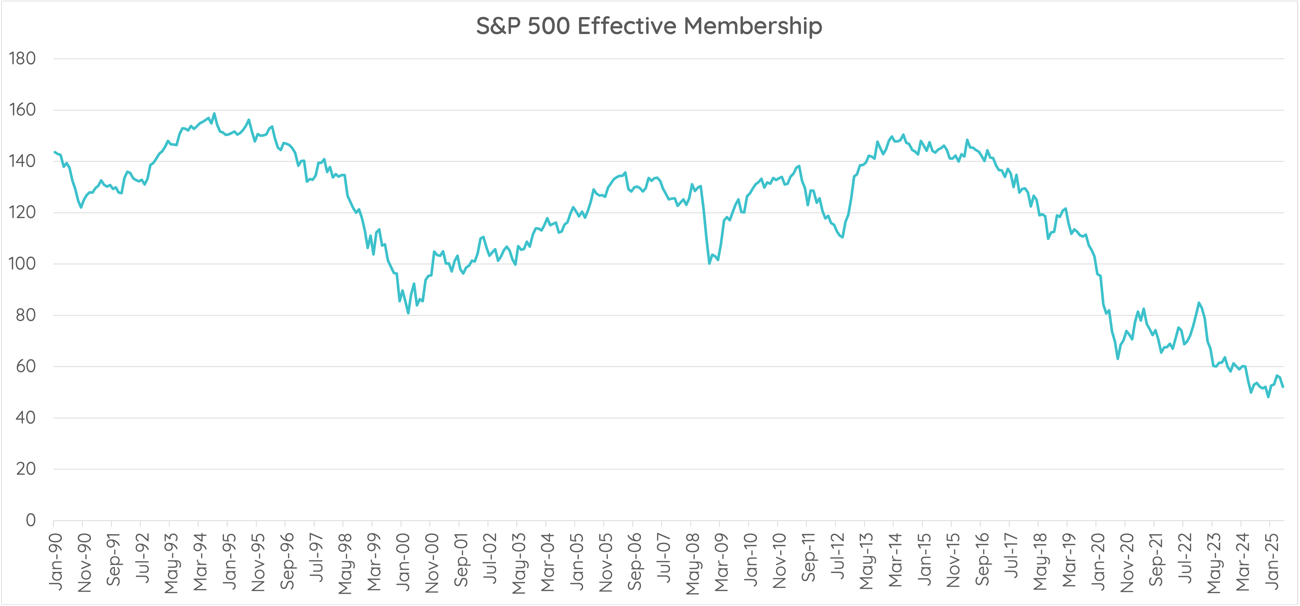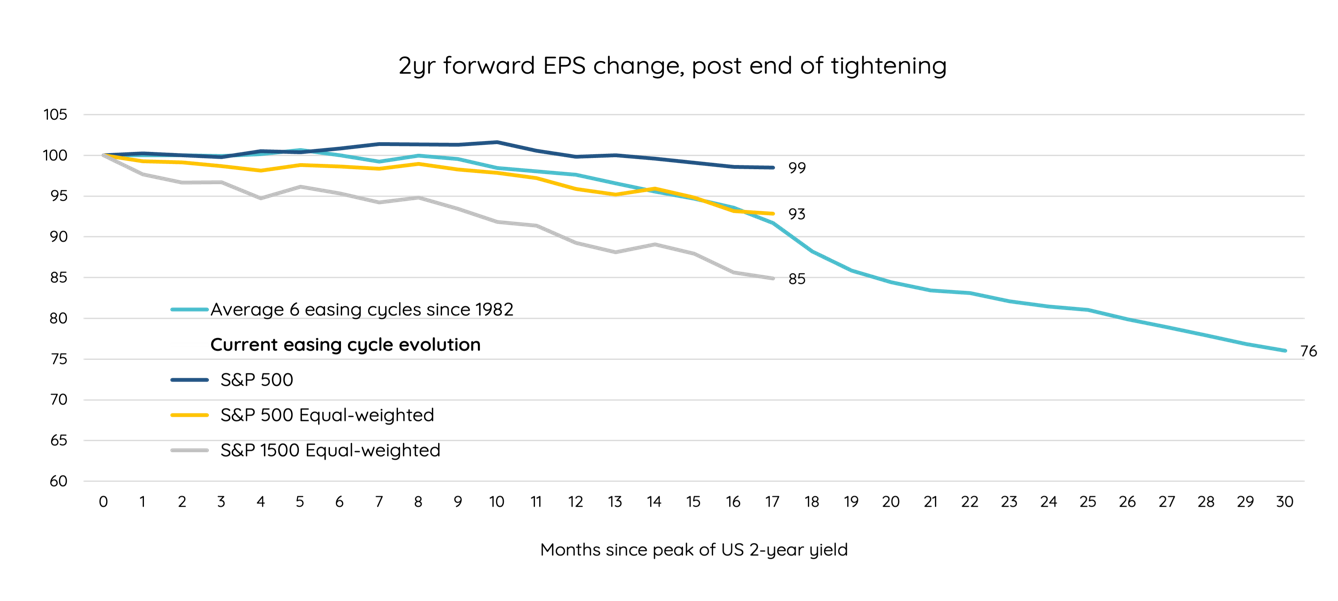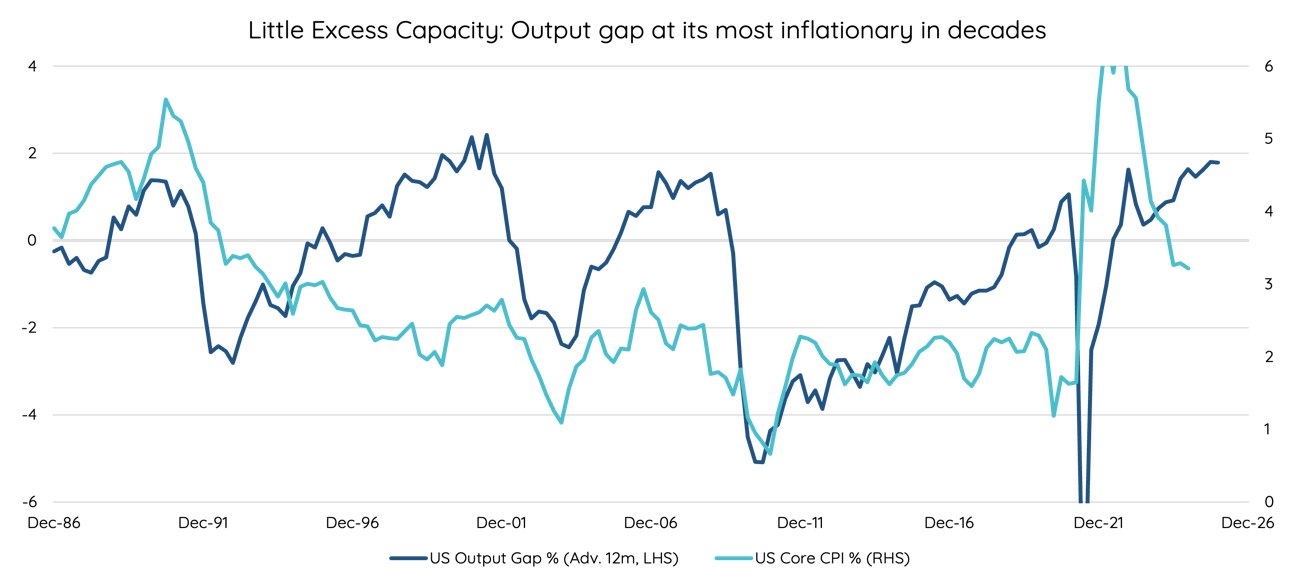Forewarned is forearmed: The quixotic challenge of today's equity marketsBY HUGH SELBY-SMITH | FRIDAY, 27 JUN 2025 1:39PMIn Don Ǫuixote, author Miguel de Cervantes introduces us to Alonso Ǫuijano, a man who reads so much fiction that he loses his grip on reality. To live out his fantasies, Ǫuijano assumes the identity of Don Ǫuixote de la Mancha, a wandering knight-errant determined to revive a noble code and serve his nation. The novel is a tribute to conviction and the human spirit, but also a cautionary tale about what happens when perception no longer matches reality. Like Cervantes' titular character, today's markets are driven by powerful narratives: American innovation, steady economic growth, and the central bank put among them. These stories have held up so far, but as conditions shift, they risk obscuring the structural vulnerabilities beneath. There is value in stepping back to examine what's actually hiding in plain sight in markets, lest we find ourselves, too, tilting at windmills. The RisksConcentration RiskEquity indices are being driven by a narrow band of companies, particularly in the U.S. market. As of May 2025, the U.S. made up 71% of the MSCI World Index, reflecting the rise of a handful of mega-cap technology stocks, known collectively as the "Magnificent Seven," which now account for around 34% of the SCP 500. One way to quantify this concentration is to use the Herfindahl-Hirschman Index (HHI), a measure of market concentration calculated by squaring the market share of each company and summing the results. It is then possible to calculate the elective number of stocks which represent the entire market. As of today, the diversification within the SCP500 is the lowest in the last 35 years at only 52 stocks.
Figure 1- Source: Bloomberg, S&P 500 Effective Membership (.SPXEFMEM G Index). Data to May 2025. This concentration isn't just a theoretical risk. On 27 January 2025, Nvidia's share price dropped 17%, sparked by concerns about increased competition from Chinese AI firm DeepSeek. Despite more than 350 companies in the SCP 500 posting gains that day, the entire index was down nearly 2%, largely as a result of Nvidia's fall. It underscores the extent to which index-level outcomes are now being dictated by only these 52 stocks, and why diversification and valuation are an investor's best defence. Earnings RiskWhile there has been a strong price growth for the SCP 500 index over the last 12-18 months, earnings forecasts are a different story. Historically, it takes around 18 to 30 months after central banks stop raising rates for the full effect on earnings to play out. As shown in the chart below, during the six most recent easing cycles since 1982, average earnings forecasts fell by 24% following the peak in interest rates. Importantly, the bulk of this downward revision tends to occur a year or more into the cycle-well after rates have peaked and optimism has returned to the market.
Figure 2 - Source: Piper Sandler, Bloomberg 31 March 2025 In this current cycle, the SCP 500's earnings profile appears slightly more resilient, likely due to the dominance of highly profitable tech giants. However, when you look at the SCP 500 on an equal-weighted basis, or at smaller companies in the broader SCP 1500 index, earnings expectations have already begun to decline significantly. Small caps, for instance, have seen forecasts cut by 15% so far. If historical patterns hold, the worst may be yet to come. While markets have largely priced in a soft landing, earnings expectations could face further downgrades as the lagged effects of tighter monetary policy continues to unfold and as the impact of increased tariffs lowers margins. Inflation and the Output GapWhile US headline inflation has moderated, underlying pressures remain elevated-and the cyclical backdrop points to reasons they may persist. A key indicator is the output gap, which measures the economy's excess capacity. At present, that gap is at one of its tightest points since 1986. When there is little slack in the system, even modest increases in demand can create price pressures. This dynamic makes it more difficult for central banks to justify cutting rates aggressively, especially if growth continues at even a modest pace.
Figure 3 - Source: Talaria, FactSet, The Macro Institute. 31 December 2025 Adding to this is the structural reversal of decades-long disinflationary trends that began with the globalisation boom. The integration of China into the global economy in the 1990s, for instance, brought a flood of cheap imports that helped cap domestic price growth. Today, that deflationary force is at risk of reversing. Supply chains are becoming more regional, tariffs are rising and countries are seeking economic self- sufficiency. For companies like Walmart, these shifts are already hitting margins, with executives flagging higher prices due to tari^ costs. Inflation may not be spiralling, but it's likely to remain uncomfortably persistent, complicating the outlook and limiting policy flexibility. Bond and valuation risksThe relationship between bonds and equities has changed in ways that significantly reduce diversification benefits for investors. Historically, falling bond yields didn't uniformly support equities; only about 20% of the market was positively correlated to bond yield declines. Today, that figure is closer to 70%, due in large part to the rise of long-duration growth stocks whose valuations depend on earnings far into the future. In this context, equities and bonds have become increasingly positively correlated, meaning traditional portfolios (like the 60/40) no longer offer the same protection in volatile markets. Compounding this risk are stretched valuations across asset classes. The Shiller PE ratio, a measure of how expensive equities are based on 10-years of real earnings, now sits at 36.3x, more than 40% above its 20-year average. High yield credit spreads are also unusually tight, with investors being paid just 311 basis points above the risk-free rate-25% below the 10-year average. Should any of the assumptions underpinning this optimism - stable inflation, rate cuts, ongoing earnings strength - fail to materialise, valuations could face a painful reset. One contradiction already stands out: markets seem to expect that companies will preserve margins by passing on the costs of recent tariffs, while also expecting inflation to fall. Both outcomes cannot hold true. Assessing the risksAt Talaria, we don't make forecasts, but look to the numbers to prepare for what may come. What we do know is that risks, whether in the form of extreme concentration, delayed earnings downgrades, persistent inflation, or eroding diversification are elevated today. In such an environment, preserving capital and delivering consistent income becomes not just valuable, but essential. Our approach blends fundamental value investing with a distinctive implementation process. Every equity we own begins life as a cash-backed put option-enabling us to generate an additional source of return by being paid to take risk selectively. This process allows us to build a portfolio that captures most of the upside, significantly reduces the downside, and smooths the investor journey. Reality restoredHumiliation and defeat are ultimately what restored Alonso Ǫuijano's senses and encouraged him to retire the belief that he is the knight, Don Ǫuixote. In the same way, markets often need to see losses before they reassess risk, abandon narratives, and return to fundamentals. It's not a well-reasoned argument that undoes the illusion. The US market is animated by compelling ideals: innovation, resilience, and ambition. But even the most inspiring stories can obscure hard truths. In times when returns appear to come easily, it's not hard to mistake momentum for immunity and conviction for certainty. However, the best advice comes from the mad knight himself "Forewarned, forearmed; to be prepared is half the victory." In our view, the best defence against elevated risk is not retreat, but thoughtful, disciplined exposure. |
Latest News
APRA expects 'no cutting corners' with CPS230
|Super on paid parental leave to reduce gender gap: ASFA
Average super balance grows to $172k: ATO
MLC AM delivers real returns for members in FY25
Cover Story

Climbing to the top
MANAGING DIRECTOR
VANGUARD INVESTMENTS AUSTRALIA LTD


























